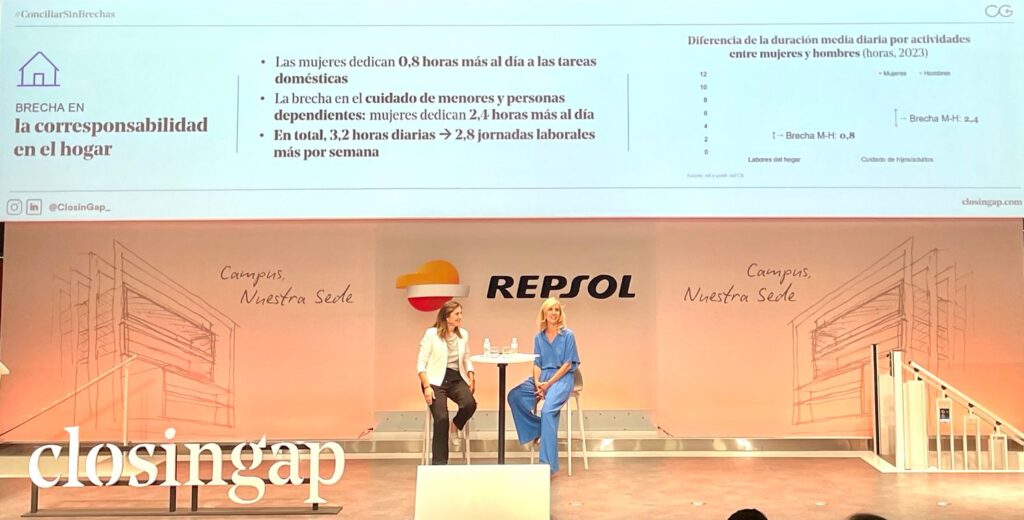Yesterday, June 17, I had the opportunity to attend the presentation of the report at Repsol's headquarters. "Opportunity cost of the gender gap in reconciliation", developed by Closingap and Repsol. It was a revealing morning: data that puts a number on what millions of women experience every day.
I deeply appreciate being invited to hear firsthand about this comprehensive and necessary study, which deserves more than just one article.
I will now share a reflection focused on the invisible backpack: that double day of domestic planning and organization that rarely appears in statistics, but defines our reality.
What the report tells us
The report presented by ClosinGap and Repsol reveals that the inequality in the distribution of domestic and care tasks between men and women is not only persistent, but also profoundly costly. According to the analysis, women in Spain spend 3.2 hours more each day than men on household and family care, which is equivalent to two additional workdays per week.
This is not limited to physical time: it includes what the report explicitly calls "mental load". Planning medical appointments, knowing when to get vaccinations, deciding what to cook this week, buying a child's birthday gift, extracurricular activities, the school route, emotional management of the household... All of this is thought out, organized, and executed, for the most part, by women. This is what is called the invisible backpack.
This inequality of time and effort is not limited to the personal sphere. It has a collective price. The report estimates that, if women dedicated the same hours as men to household chores and care, Spain would gain 41 million hours of available talent per day.
The annual opportunity cost of that gap amounts to 95.581 million euros, 6.4% of GDP.
But beyond the economic data, the impact is human: the “time poverty” experienced by millions of women limits their health, well-being, and professional development.We are not just talking about a silent injustice, but a real obstacle to the country's progress.
This mental load it doesn't appear in any official report or Social Security records, but it drains energy, concentration, and creativity.
This report is not a complaint; it is a snapshot. Una que necesitamos enfrentar con valentía. Because if we measure what is happening —as Marieta Jiménez said at the opening of the event—, then we can also change it.
Why is it important to recognize it?
- Invisible wear. Each mental plan, each reminder, is a small "whip" that accumulates stress and reduces our well-being.
- Professional ImpactLess focus, more internal interruptions, delayed decisions: the double day translates into lower real productivity.
- Opportunity gap. When the burden is too heavy, many choose to reduce their workload or abandon high-potential projects.
Recognizing the invisible backpack is the first step toward designing work-life balance policies that go beyond simply granting time off and instead address true shared responsibility.
Conclusion
The invisible backpack is not a voluntary accessory; it's the weight that many women carry every day, and without recognition, it perpetuates inequality. Until we integrate this dimension into our policies and organizational culture, the reconciliation gap will continue to be a specter that hinders collective growth and individual freedom.
Equality does not advance by inertia: it needs an attentive gaze, data that do not forget the invisible, and the will to change the structures that define us today.
